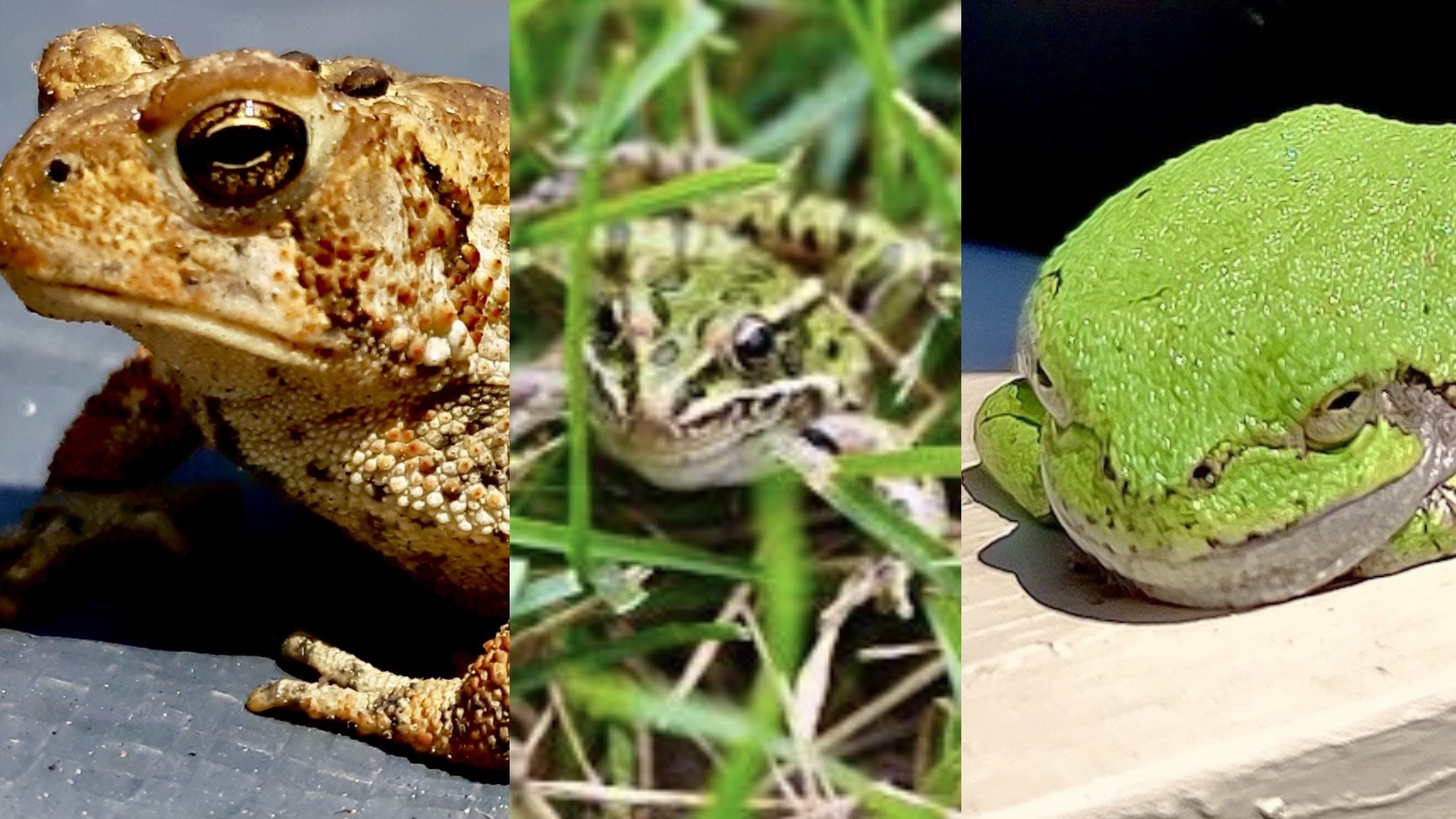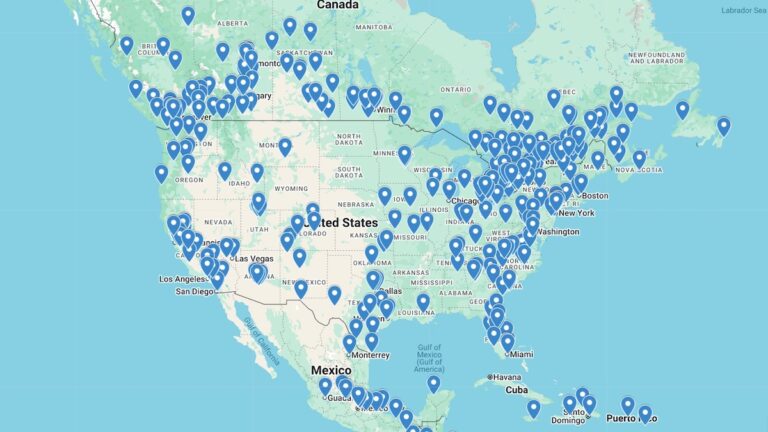
A wonderful week of wildlife encounters! We were thrilled to spot these three fascinating amphibians in our land-based living lab. Each one a unique marvel of nature!
Celebrating Our Hoppy Neighbors!
It’s easy to get frogs and toads mixed up, but once you know a few key differences, you’ll be spotting them like a pro! Generally speaking, frogs tend to have smoother, moister skin, often appearing slimy. They typically have longer legs built for powerful leaps and prefer to stay close to water. Toads, on the other hand, usually sport drier, warty skin and have shorter legs, making them more inclined to walk or take smaller hops. They’re also a bit more tolerant of drier environments, venturing further from water sources.
But regardless of their subtle differences, both frogs and toads play vital roles in our ecosystems, and getting to observe them up close is always a treat!
The Dapper Northern Leopard Frog

First up, we have the dashing Northern Leopard Frog, who clearly knows how to blend in with its surroundings! This little guy was perfectly camouflaged amidst the vibrant green blades of grass, almost playing a game of hide-and-seek. With its striking green skin adorned with distinctive dark, rounded spots that resemble a leopard’s markings, it’s truly a sight to behold. These agile jumpers are often found near ponds, marshes, and slow-moving streams, patiently waiting for an insect snack to come their way. Our encounter with this beauty reminded us just how much life thrives even in the seemingly ordinary corners of our land-based living lab here in Thunder Bay.
The Hearty American Toad

Next, we had the pleasure of meeting this robust American Toad, looking quite content as it basked in the sun. Unlike its slick-skinned froggy cousins, this toad proudly sports a textured, bumpy skin in shades of brown and orange, giving it a wonderfully earthy appearance. American Toads are truly resilient creatures, often found hopping about in gardens, woodlands, and even urban areas, proving they don’t always need to be right by the water’s edge. Their diet mainly consists of insects, slugs, and other small invertebrates, making them fantastic natural pest controllers for any garden. This particular toad seemed quite at home on our lab’s surface, reminding us of the diverse habitats our local amphibians call home.
The Charming Gray Tree Frog

And finally, capping off our amphibian adventures, we were delighted to find this adorable Gray Tree Frog, looking quite relaxed on a surface in our lab. While its name suggests “gray,” these clever chameleons can actually change their color to match their surroundings, ranging from mottled gray to brilliant green, just like this one! Their incredible camouflage and sticky toe pads allow them to cling effortlessly to trees, shrubs, and even the side of your house. During the day, they often huddle up, conserving energy, and become more active as dusk settles, serenading us with their distinctive trilling calls. This little green gem was a perfect reminder of the hidden wonders just waiting to be discovered when you take a closer look.
Beyond the Croak: The Essential Role of Frogs and Toads
These remarkable amphibians, frogs and toads, play a vital role in our ecosystems, acting as both predators and prey. Their permeable skin makes them particularly sensitive to environmental changes, serving as important bioindicators of habitat health. From the explosive breeding calls of spring to their silent, bug-eating patrols through the night, frogs and toads are fascinating creatures that contribute significantly to the biodiversity and ecological balance of Northwestern Ontario and beyond. Protecting their habitats and ensuring clean water sources are crucial steps in safeguarding these valuable members of our natural world for future generations.





